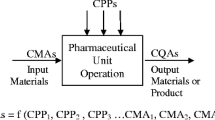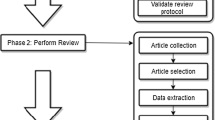Abstract
Design processes can be classified based on the nature and frequency of a design problem. Designers possess the knowledge of the structure of design objects, and the techniques needed to perform design. Engineering design objects in general consist of assemblies of components and involve the design of the components through satisfaction of constraints between them. In this paper we propose a formal object-oriented approach to the description of engineering designs, and the management of design objects. The concepts of design objects, primitive design, design constraints and dependencies have been formalized. Factors outside the domain of the target design object determine what technique is used by the designer to solve the design problem. We discuss the representation of design techniques themselves using a graph-based approach and illustrate a methodology for design and its use by a designer. Design objects and design techniques are mapped into the relational model because of its wide acceptance and the current availability of relational database management systems. We point out how this environment may be used for conducting the design process by selection of components.
Similar content being viewed by others
References
Ahmed, R. (1989) Concepts for the management of computer aided design databases. PhD Dissertation, University of Florida, FL.
Ahmed, R. and Navathe, S. B. (1991) Version management of composite objects in CAD databases, inProceedings of the ACM-SIGMOD Conference,29, 2, pp. 218–27.
Banerjee, J., Kim, W., Kim, H. and Korth, H. F. (1987) Semantics and implementation of schema evolution in object-oriented databases, inProceedings of the ACM-SIGMOD Conference,3, pp. 311–22.
Biliris, A. (1989a) A data model for engineering design objects, inProceedings of the ACM IEEE 2nd International Conference on Data and Knowledge Systems for Manufacturing and Engineering, Gaithersburg, Maryland, pp. 49–58.
Biliris, A. (1989b) Database support for evolving design objects, inProceedings of the ACM IEEE 26th Design Automation Conference, Las Vegas, pp. 258–63.
Billo, R. E., Rucker, R. and Shunk, D. L. (1987) Integration of a group technology classification and coding system with an engineering database.Journal of Manufacturing Systems,6, 37–45.
Billo, R. E., Rucker, R. and Shunk, D. L. (1988) Enhancing group technology modeling with database abstractions.Journal of Manufacturing Systems,7, 95–106.
Brown, D. C. and Breau, R. (1986) Types of constraints in routine design problem solving, inApplications of Artificial Intelligence in Engineering Problems, Sriram, D. and Adey, R. (eds). Springer-Verlag, Berlin,1, pp. 383–90.
Brown, D. C. and Chandrasekaran, B. (1989)Design Problem Solving-Knowledge Structures and Control Strategies, Morgan Kaufmann Publishers Inc., San Mateo, CA.
Cammarata, S. J. (1986) An object-oriented data model for managing computer-aided design and computer-aided manufacturing data bases. PhD Dissertation, University of California, Los Angeles.
Chandrasekaran, B. (1990) Design problem solving: a task analysis.AI Magazine,11, No. 4.
Cornelio, A. (1989) A structure-function modeling paradigm for engineering databases. PhD Dissertation, University of Florida, FL.
Cornelio, A. and Navathe, S. B. (1990) Integration and cataloging of engineering design information,Proceedings of the First International Conference on System Integration, Morristown, NJ, pp. 720–9.
Cornelio, A., Navathe, S. B. and Doty, K. L. (1990) Extending object-oriented concepts to support engineering applications,Proceedings of the Sixth International Conference on Data Engineering, Los Angeles, CA.
Eberlein, W. and Wedekind, H. (1982) A methodology for embedding design databases into integrated engineering systems, inFile Structures and Data Bases for CAD. Encarnacao, J. and Krause, F. L. (eds), North-Holland Publishing Company, New York, pp. 3–37.
Elmasri, R. and Navathe, S. B. (1989)Fundamentals of Database Systems. Benjamin/Cummings Publishing Company Inc., Redwood City, CA, pp. 641–44.
Fishman, D. H., Beech, D., Cate, H. P., Chow, E. C. et al. (1990) Iris: an object-oriented database management system, inReadings in Object-Oriented Database Systems, Zdonik, S. B. and Maier, D. (eds), Morgan Kaufmann Publishers Inc. San Mateo, CA, pp. 216–26.
Gero, J. S. (1990) Design prototypes: a knowledge representation schema for design.AI Magazine,11.
Hardwick, M. and Spooner, D. L. (1989) The ROSE data manager: using object technology to support interactive engineering applications.IEEE Transactions on Knowledge and Data Engineering,1, 285–9.
Haynie, M. N. (1988) A DBMS for large design automation databases.Proceedings of the ACM SIGMOD Conference,17, 3, pp. 269–76.
Hyer, N. L. and Wemmerlov, U. (1984) Group technology and productivity.Harvard Business Review,62, 140–9.
Judd, R. P. and Sauter, J. A. (1990) Applying integrated tools to the design of manufacturing systems, inProceedings of the AUTOFACT Conference (to be published).
Judd, R. P., Vanderbok, R. S., Brown, M. E. and Sauter, J. A. (1990) Manufacturing system design methodology: execute the specification, inProceedings of CIMCON '90, NIST Special Publication 785, pp. 133–52.
Kemper, A., Lockemann, P. C. and Wallrath, M. (1987) An object-oriented database system for engineering applications, inProceedings of the ACM SIGMOD Conference,16 3, pp. 299–310.
Ketabchi, M. A., Berzins, V. and Maly, K. (1984) Component aggregation: an abstraction mechanism for design and engineering databases.Technical Report 84-35, University of Minnesota.
Ketabchi, M. A. and Berzins, V. (1985a) The theory and practice of representing and managing the refinements, alternatives, and versions of composite objects.Technical Report 85-40, University of Minnesota.
Ketabchi, M. A. and Berzins, V. (1985b) ODM: an object oriented data model for design databases.Technical Report 85-41, University of Minnesota.
Ketabchi, M. A. and Berzins, V. (1988) Mathematical model of composite objects and its applications for organizing engineering databases.IEEE Transactions on Software Engineering,14, pp. 71–84.
Kim, W., Banerjee, J., Chou, H., Garza, J. F.et al. (1987) Composite object support in an object-oriented database system, inProceedings of the OOPSLA Conference,22, 12, pp. 118–25.
Kim, W., Bertino, E. and Garza, J. F. (1989) Composite objects revisited, inProceedings of the ACM SIGMOD Conference,18, 2, pp. 337–47.
Kota, S. and Lee, C. L. (1989) A computational model for the conceptual design synthesis of hydraulic circuits.Computers in Engineering 1989,1, 161–70.
Kusiak, A. and Park, K. (1990) Concurrent engineering: decomposition and scheduling of design activities.International Journal of Production Research,28, 1883–900.
Morgenstern, M. (1986) The role of constraints in databases, expert systems and knowledge representation, inProceedings from First International Workshop on Expert Database Systems, Kerschberg, L. (ed.), Benjamin/Cummings Publishing Company, Inc., Redwood City, CA, pp. 351–68.
Navathe, S. B. and Cornelio, A. (1990) Modeling engineering data by complex structural objects and complex functional objects, inAdvances in Database Technology-EDBT '90, Bancilhon, F., Thanos, C. and Tsichritzis, D. (eds) Springer-Verlag, Berlin, pp. 238–52.
Nevins, J. L. and Whitney, D. E. (1989)Concurrent Design of Products and Processes, McGraw-Hill Publishing Company, New York.
OBJECTODAY (1990)Versant Object Technology's Quarterly Newsletter, Menlo Park, CA,I, 3, pp. 1–10.
Pahl, G. and Beitz, W. (1984)Engineering Design, Springer-Verlag, Germany.
Takeda, H., Veerkamp, P., Tomiyama, T. and Yoshikawa, H. (1990) Modeling design processes.AI Magazine,11.
Tong, C. (1987) Towards an engineering science of knowledge-based design.Artificial Intelligence in Engineering,2, 133–66.
VanderBok, R. and Sauter, J. A. (1990) A case study: integrated methods and tools for optimization inProceedings of the AUTOFACT Conference (to be published).
Ward, A. C. and Seering, W. P. (1987) Representing component types for design, inAdvances in Design Automation-1987, Rao, S. S. (ed.) ASME,1, pp. 315–19.
Author information
Authors and Affiliations
Additional information
Work was done while the authors were at University of Florida
Published with kind permission of Academic Press inControl of Dynamic Systems as ‘Organizing Engineering Designs and Design Techniques’ 1992.
Rights and permissions
About this article
Cite this article
Navathe, S.B., Murthy, S.K. & Cornelio, A. A database approach to engineering design by selection. J Intell Manuf 3, 149–162 (1992). https://doi.org/10.1007/BF01477598
Received:
Accepted:
Issue Date:
DOI: https://doi.org/10.1007/BF01477598




